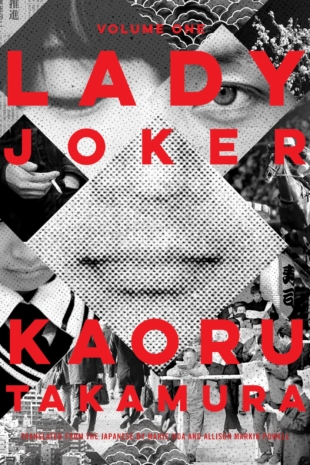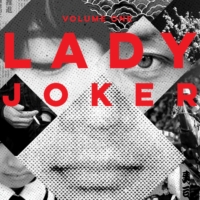“Lady Joker” by Kaoru Takamura was published in Japanese in 1997, but its English-language debut in 2021 still feels timely. On the surface, this classic of contemporary Japanese fiction — twice adapted for the screen — is a crime thriller, but underneath it’s a state-of-the-nation novel that is perhaps even more apposite today than 24 years ago.
Lady Joker: Volume One, by Kaoru Takamura
Translated by Marie Iida and Allison Markin Powell
600 pages
SOHO CRIME
The book centers on the kidnapping of the head of a fictional beer company, Hinode, by a mismatched gang of amateur corporate extortionists. The kidnapping, however, is almost beside the point. The first half of this 600-page tome — the first volume of a two-part opus — is given over to introducing the criminals and watching them mastermind their plan. The second half pivots to the kidnapping and shows readers its aftermath from the perspective of the police and reporters. In other words, there is both crime and punishment.
As one character points out, “The amount of time it will take to carry out the crime is actually quite short. In contrast, the anticipation leading up to and the excitement after the fact will be more than enough.” He’s not wrong.
This structural choice is telling of Takamura’s intentions: By introducing the criminals first, the readers get to know them and come to sympathize with their motives. Each member of the motley crew is an outsider: Seizo Monoi, the beaten-down pharmacist from a burakumin (descendants of a stigmatized social minority group) background who hatches the initial plan; Junichi Nunokawa, the single father of a teenage daughter with Down syndrome; Katsumi Koh, a Zainichi Korean sick of the discrimination he faces every day; Shuhei Handa, a disillusioned cop; and Yokichi Matsudo, referred to as Yo-chan, whose intellect is obstructed by his struggles with social interaction.
The prosperity of Japan’s 1980s bubble economy has passed them by, and as they move into the stagnant ’90s, each has an axe to grind. Hinode becomes the corporate avatar of the corrupt capitalistic Japan they seek vengeance upon.
Takamura ensures readers are firmly on the criminals’ side before a single crime has been committed, and this sympathy is reinforced when the police and reporters take the stage. Seizo reflects on the feeling of frustration and “entrapment” he has felt his entire life, and yearns just once, before death, to “no longer live the life of an animal.” By contrast, the police talk openly about how they treat “VIPs” like Hinode’s CEO and president Kyosuke Shiroyama differently from the rest, patrolling the streets around their homes like private security squads rather than tax-funded public servants.
This is a novel steeped in the unfairness upon which modern life rests. Japan’s homogeneity hides a series of systematic discrimination: race, gender and, most importantly for Takamura, class. The kidnapping and extortion at the heart of “Lady Joker” isn’t driven by greed — Seizo is an old man who is beyond such facile cares — rather, it is class warfare, a desire for revenge on a system that elevates and protects corporate higher-ups while exploiting people like Seizo and the rest. As Katsumi, a financial expert who works for a credit union, says, it’s all criminal from a certain point of view.
In this sense, the book fits in well with the contemporary climate into which this translation is being published. When it was written and published, the internet was just catching on and victims of capitalist excess didn’t have as much of a voice. Today, social media has allowed previously overlooked discrimination in society — in Japan and around the world — to step into the light. Recent social justice movements, such as Black Lives Matter and #MeToo, have shown that the kind of anger felt by the characters in this novel isn’t unusual, and needs to be heeded, even if Seizo’s solution isn’t ideal.
Takamura is a forensic writer, and the translators, Marie Iida and Allison Markin Powell, deserve plaudits for the work done to bring this mammoth text into English. For those wanting a page-turning thriller in the vein of Hideo Yokoyama’s “Six Four,” there’s plenty of police procedure, smoky backrooms, tense press conferences and angry superiors slamming things on desks. But there is also social commentary, history and a comprehensive account of how Japan’s corporate, political and criminal worlds coexist in an uneasy, toxic relationship. Like all great fiction, “Lady Joker” informs and entertains.
The one note of frustration is that this is only the first half of the story. “Lady Joker: Volume Two” is currently undergoing translation and will be out in 2022. But this isn’t “Lady Joker” and its sequel — “Volume One” leaves off at what seems like a major turning point in the plot. In which case, it’s perhaps just as well that readers are introduced to the criminals upfront — waiting a full year to find out “whodunit” would be unbearable.
In a time of both misinformation and too much information, quality journalism is more crucial than ever.
By subscribing, you can help us get the story right.
SUBSCRIBE NOW
KEYWORDS
lady joker, Kaoru Takamura





